After 18 glorious years, Nissan has finally pulled the plug on the R35 GT-R as the final car, a Midnight Purple T-Spec, rolled off the Tochigi production line this week. It brings one of Japan’s most celebrated performance machines to a close. For JDM car culture, it marks the end of a dynasty that belongs on the same stage as icons like the V10-powered Lexus LFA, the gen-1 Acura NSX, and the iconic Skyline GT-R R34. In any list of all-time greats from the land of the rising sun, the R35 has earned its rightful place right near the top.
A Global Supercar Killer

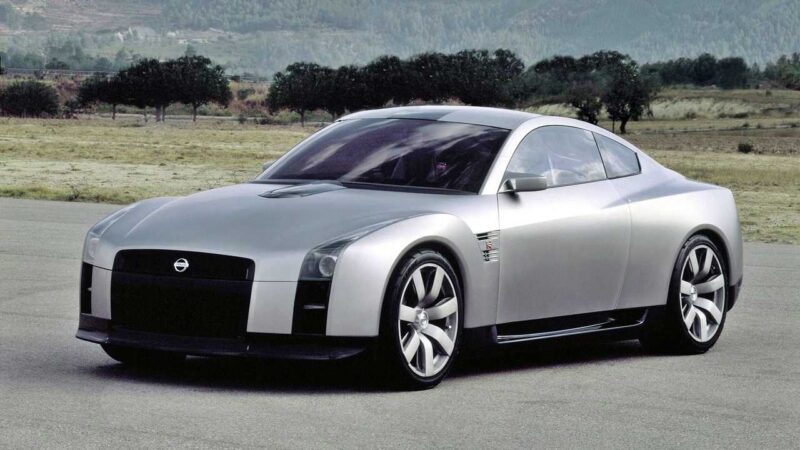
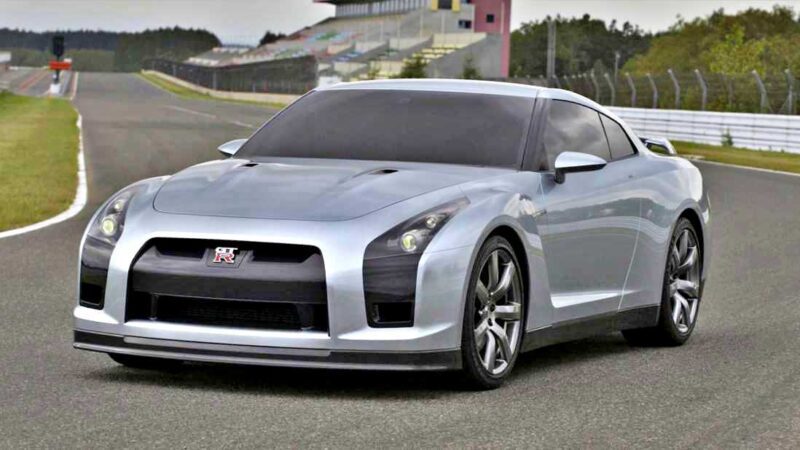
The R35’s journey began long before its 2007 launch. Back in ‘01, Nissan previewed the GT-R Concept at the Tokyo Motor Show, teasing a replacement for the Skyline GT-R. This was followed by the Proto concept in 2005, and two years later, under the leadership of then-CEO Carlos Ghosn, the production version of the R35 debuted on the same Tokyo stage, with sales beginning in Japan by December that year.
Unlike prior generations of the Skyline GT-R, from the onset, Nissan engineered the R35 as a global product, with its greatest adversary being the Porsche 911 Turbo, a rivalry that would go on to define the R35’s identity over its near two-decade-long run. Both pack twin-turbo six-cylinder engines and all-wheel drive, but the GT-R delivered supercar levels of acceleration and performance at a price (just under $70k when new in 2008) that left Porsche scrambling. Nissan proved this point quickly when, in 2007, the new GT-R managed to get around the Nürburgring in 7 minutes 38 seconds. By April 2009, revisions cut that time to 7:26, and by 2013, the GT-R NISMO model slashed it to 7:08.679.
While the Turbo S itself never broke seven minutes, Porsche’s track-focused GT models were able to regain lost ground on home turf over the years. The 991.2 GT2 RS set a time of 6:47.3 in 2017, and more recently 992.1 GT3 RS set a 6:49.3 in 2022. We’ve seen three generations of the 911 (997, 991, and 992) during the R35 GT-R’s nearly two-decade-long run. Having said that, the flagship Nissan was updated almost annually to keep things fresh. We’re talking, power bumps, suspension tweaks, interior updates, etc.
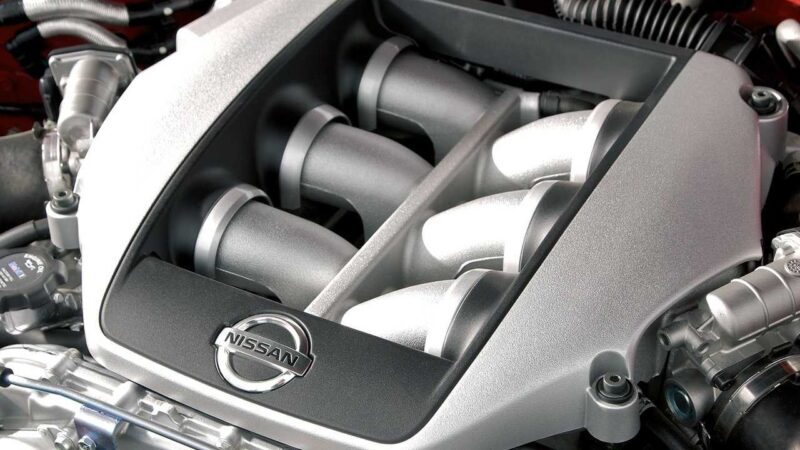
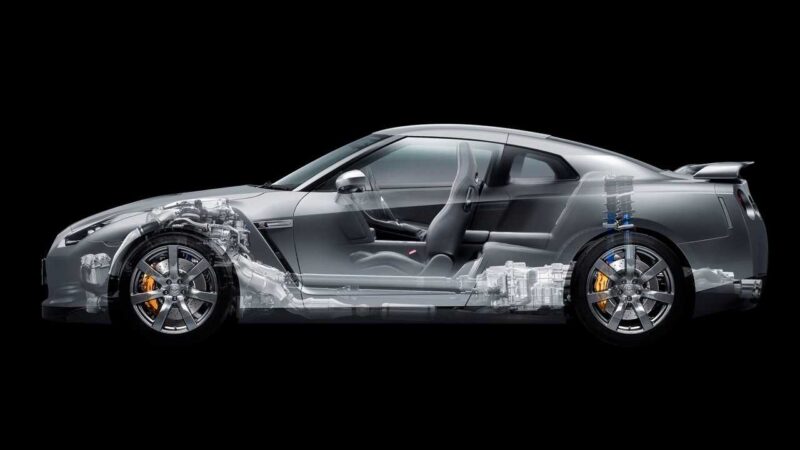
Every engine in the cars mentioned above carried the touch of Nissan’s Takumi. A core group of just nine master craftsmen in Yokohama hand-assembled each of the now legendary VR38DETT V6, spending about six hours per engine. At launch, the R35 produced 480 horsepower, growing to 570 in 2017 and topping out at 600 in the NISMO, which used GT3-spec turbochargers and precision-balanced internals. The rear-mounted six-speed dual-clutch gearbox and the sophisticated ATTESA E-TS all-wheel-drive system allowed the car to put down its power with relentless efficiency, shifting torque front-to-rear and side-to-side as conditions demanded.
Even though it wasn’t the lightest supercar at ~3,836 pounds, its power-to-weight ratio, about 276 horsepower per ton at launch, up to 327 horsepower per ton by the mid-2010s, combined with traction, meant repeatable, devastating performance. The GT-R was a car anyone could launch to 60 mph in around three seconds, rain or shine. That philosophy of constant, incremental improvement was unlike rivals that have mostly relied on single mid-cycle overhauls.
The styling design reflected this brutalist philosophy. The R35 abandoned Skyline curves for hard edges and muscle. Its blacked-out A-pillars created a helmet-like cockpit, while the signature quad circular taillights tied it to decades of GT-R history. Inside, Nissan partnered with Polyphony Digital, the creators of Gran Turismo on PlayStation, to design the multifunction display graphics. Drivers could monitor boost pressure, lap times, g-forces, and oil temps in real time, bringing a video game interface into the cabin of a production supercar
Beyond the Track: Drift Record, Tsukuba Lap, and Production Numbers
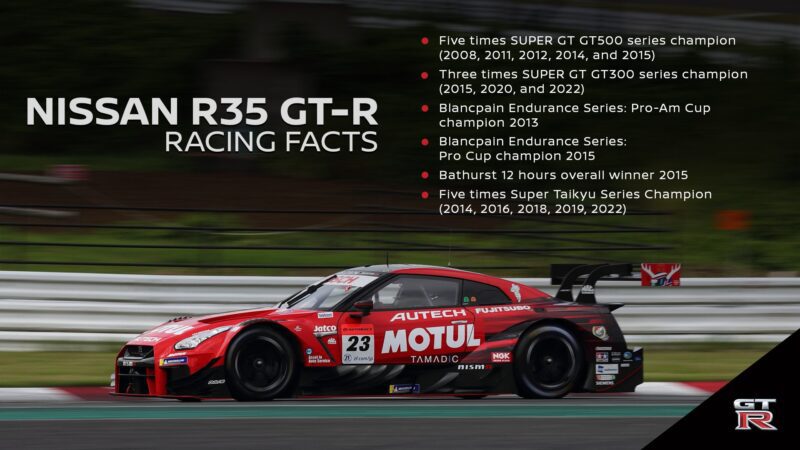
On the track, the GT-R proved its dominance almost immediately. In 2008, it debuted in Super GT’s GT500 class, winning seven of nine races and securing the driver’s championship. It went on to pick up five GT500 titles, three GT300 titles, and multiple international honors, including the Blancpain Endurance Pro-Am Cup in 2013, the Pro Cup in 2015, and an overall win at the Bathurst 12 Hour the same year. Japanese endurance racing held five Super Taikyu championships between 2014 and 2022. These were sustained campaigns that reinforced the Japanese performance car’s credibility.
But even outside racing, the R35 made headlines. In 2016, it set a Guinness World Record for the fastest drift, sliding at 304.96 km/h at Fujairah Airport in the United Arab Emirates (U.A.E.). In 2019, it set a production car lap record at Tsukuba Circuit with a 59.361-second run, a benchmark it bettered in 2024 with a 59.078. These details show how Nissan kept pushing the platform until the very end, through the GT-R’s production run. In total, 48,000 units were built, with 37 percent of global volume staying in Japan, according to Nissan.
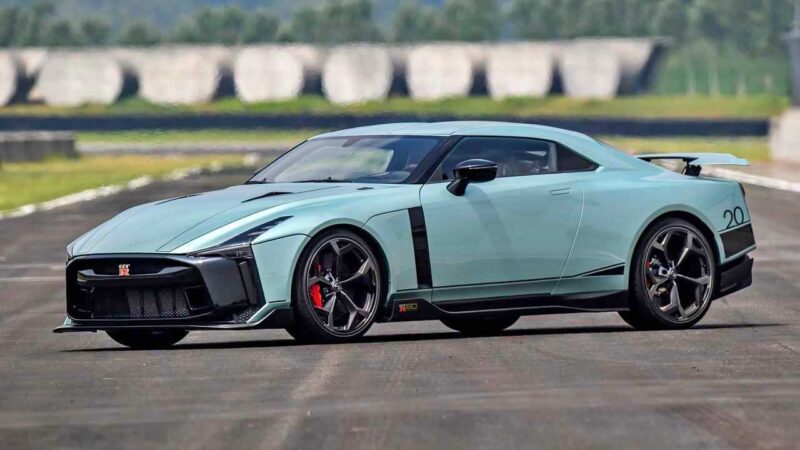
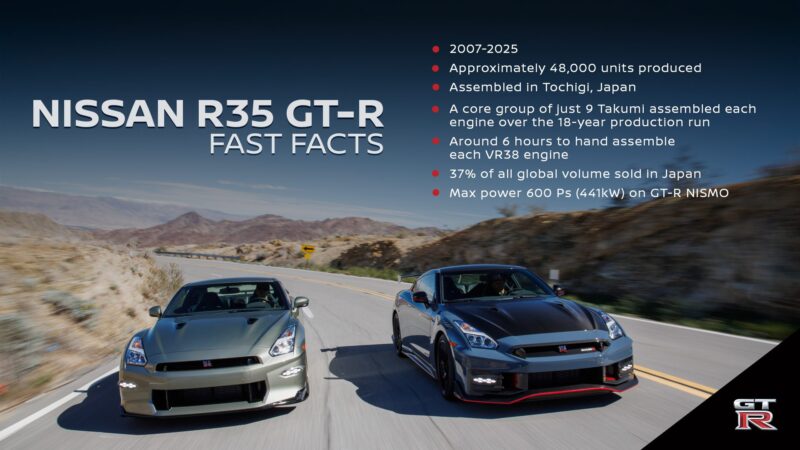
Nissan also produced highly sought-after Track Editions and T-Specs, along with domestic-market exclusives that now command collector premiums. The Spec V launched in 2009 with a track-focused package, and the 45th Anniversary model arrived in 2011. Two years later, in 2013, the GT-R NISMO premiered at the Tokyo Motor Show. The stunning Italdesign GT-R50, unveiled as a prototype in 2018 and later built in a limited run of 50 cars, delivered 710 horsepower with coachbuilt bodywork, where each was priced north of a million dollars.
A major refresh came in 2016 at the New York Auto Show with the biggest changes since launch. By 2019, Nissan marked the model’s 50th anniversary with a special edition at New York, and in 2024, it unveiled the final model year 25 update in Japan and revived iconic GT-R colors like Bayside Blue and Midnight Purple, a clear signal that the end was near. This farewell model, a Midnight Purple T-Spec, will no doubt be remembered as the symbolic end to the R35’s 18-year run.
The Future: GT-R Badge Will Return
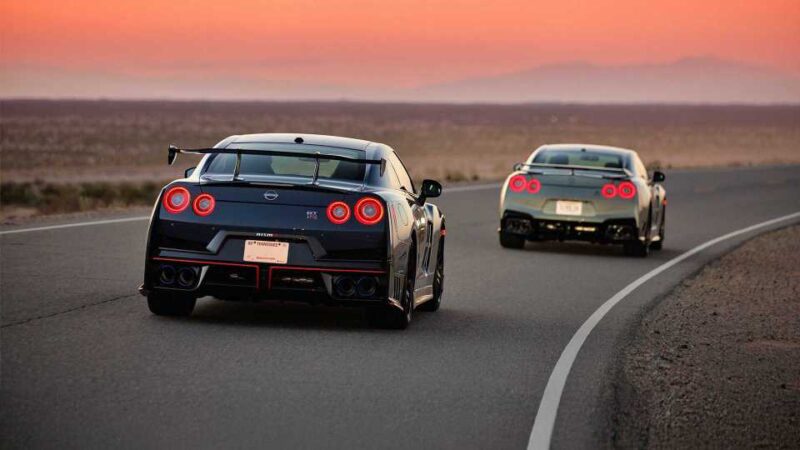

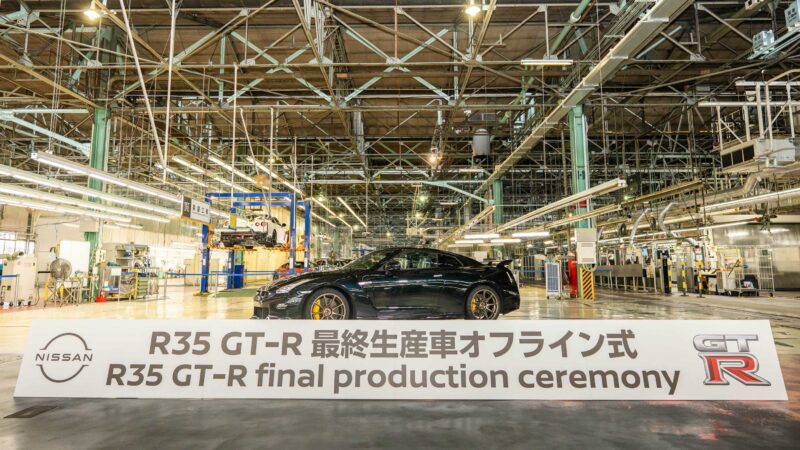
Nissan insists this is not the end of the GT-R, but only the R35. CEO Ivan Espinosa has confirmed the badge will return, though he admits the expectations are enormous. He has already said the GT-R name cannot be applied to just any car, but only to something truly special. Whether the R36 takes shape as a hybrid, a full EV, or a final combustion-powered icon remains to be seen, but Nissan knows it must raise the bar again.
For now, the R35’s story is complete. What began with a concept in 2001 and subsequently inspired an entire generation of enthusiasts, now closes a momentous chapter in 2025 with a Midnight Purple sendoff. Expect prices of highly sought-after pre-owned R35s to be on the uptick. If you are considering one for your garage, history is already on its side, and while the next chapter is yet to be written, one thing is certain: the GT-R name will not fade quietly.
Images Source: Nissan

